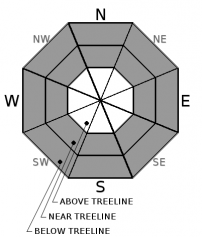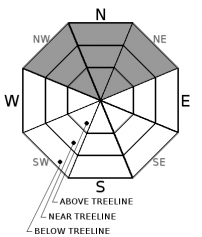| Sunday | Sunday Night | Monday | |
|---|---|---|---|
| Weather: | Sunny becoming partly cloudy | Partly cloudy becoming clear | Sunny |
| Temperatures: | 23 to 28 deg. F. | 3 to 11 deg. F. | 26 to 31 deg. F. |
| Mid Slope Winds: | Variable | Variable | Variable |
| Wind Speed: | Light | Light | Light |
| Expected snowfall: | 0 | 0 | 0 |
| Sunday | Sunday Night | Monday | |
|---|---|---|---|
| Weather: | Sunny becoming partly cloudy | Partly cloudy becoming clear | Sunny |
| Temperatures: | 20 to 26 deg. F. | 3 to 8 deg. F. | 24 to 29 deg. F. |
| Ridge Top Winds: | West | Variable | Southwest |
| Wind Speed: | 10 to 15 mph with gusts to 25 mph in the morning becoming light in the afternoon | Light | 10 to 15 mph with gusts to 25 mph in the morning |
| Expected snowfall: | 0 | 0 | 0 |




























